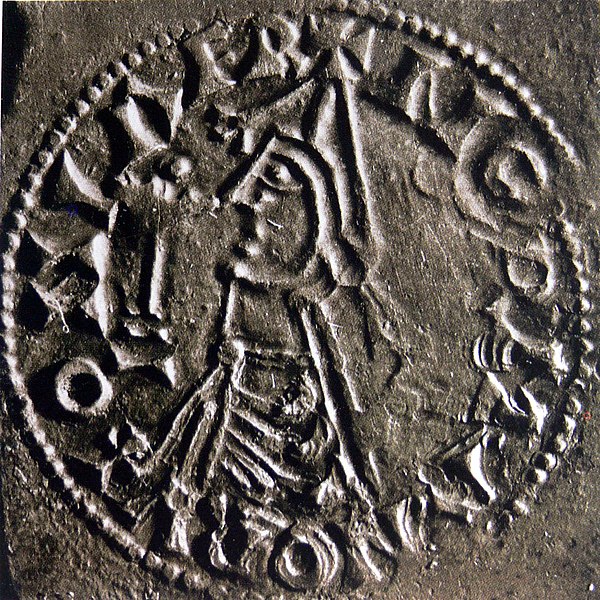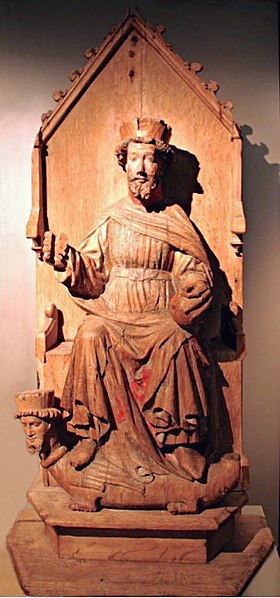Åsta Gudbrandsdatter was the mother of two Norwegian kings, King Olaf II of Norway and King Harald III of Norway. The primary source for the life of Åsta is Snorri Sturluson's saga Heimskringla, a 13th-century collection of tales about the lives of the Norwegian kings. In the chronicle, Åsta is described as "generous and high-minded" and as a keen political player and guiding influence on her royal husbands and children. Her parents were Gudbrand Kula and Ulfhild.
Saint Olaf with his half-brothers Halfdan Egedius, illustration for Olav den helliges saga. 1899
Olaf II Haraldsson, also Olav Haraldsson, later known as Saint Olaf and Olaf the Holy, was King of Norway from 1015 to 1028. Son of Harald Grenske, a petty king in Vestfold, Norway, he was posthumously given the title Rex Perpetuus Norvegiae and canonised at Nidaros (Trondheim) by Bishop Grimketel, one year after his death in the Battle of Stiklestad on 29 July 1030. His remains were enshrined in Nidaros Cathedral, built over his burial site. His sainthood encouraged the widespread adoption of Christianity by Scandinavia's Vikings/Norsemen.
Coin of Olaf dated 1023–28
Saint Olaf of Norway, by Pius Welonsky (1893) in Sant'Ambrogio e Carlo al Corso, Rome.
St. Olaf with his ax on a bishop's crozier, walrus ivory, Norway c. 1375–1400
Statue of St. Olav from Austevoll Church, Norway.





